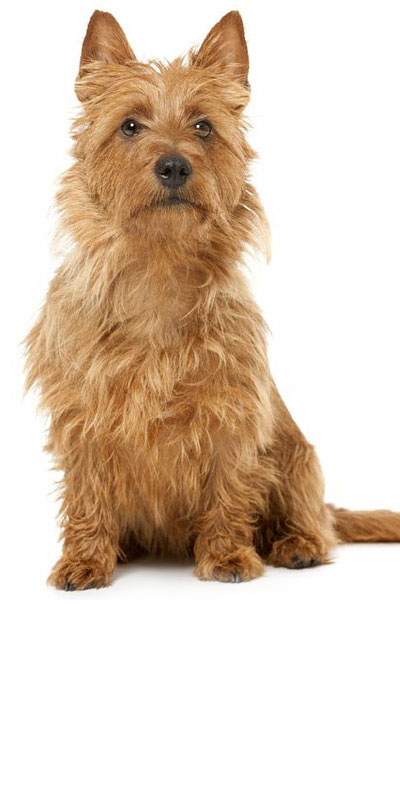Not the breed you're looking for?
Click Here
Featured Story

In smaller apartments, the right feline companion can make a world of difference. Explore 14 small cat breeds tailored for cosy living, and let your … [Read More...]
The Australian terrier is the smallest working terrier that was bred to hunt and kill snakes and rats. A small but sturdy dog with high energy level, the Australian terrier easily gets bored with routine. Whilst general obedient, this small-sized dynamo has a stubborn streak so a firm and consistent training approach is necessary.
Known for being alert and quick, the Australian terrier is a great watchdog. Whilst smart and easy to train, the Australian terrier will instinctively chase small critters or go on a digging spree.
The Australian terrier’s shaggy double coat is weather-proof so it’s relatively easy to maintain. Once-a week brushing is enough to keep the Australian terrier’s coat neat and healthy.
The smallest of the working terriers, the Australian terrier is said to have descended from a native dog called a rough-coated terrier. This type, also related to the old Scotch dog from Great Britain, was crossed with other British terriers in Australia. These included the Skye, the Yorkshire, and the black and tan terriers. Not to be confused with the Australian shepherd, the Aussie was bred to hunt and eradicate snakes and rats. The breed was also used as a shepherd, watchdog, and companion dog.
The Aussie is the first native breed recognised and included in shows in the land down under in 1868. It was under the name Australian rough-coated terrier, which was renamed to Australian terrier in 1897. The Kennel Club officially recognised it in 1933.
The Aussie weighs around 14–16 pounds and stands 24–26 centimetres at the withers. This small and sturdy pooch is long in proportion to its height. It has a long head with a flat skull and a slightly-arched neck. It has small prick ears free from long hair.
The Australian terrier has a shaggy and rough weatherproof double coat that resists tangles and easily repels dirt and mud. The hair on the chest and head is longer than the rest of the body. It sheds very minimally and can be groomed easily. It can be brushed once a week and bathed only as needed. Once every three months is optimal as bathing it frequently will cause dryness and ruin the breed’s coarse terrier coat.
Apart from taking care of your dog’s coat, make sure that its teeth are brushed regularly because small breeds are prone to dental issues. Also trim its nails, as well as look out for flees, skin irritations, and other abnormalities.
The Aussie is intelligent, confident, silly, and active. It has inherited most of the characteristics of a typical terrier, which can be off-putting for some. It has a tendency to bark, chase, and dig. It also loves escaping and running away. It is bossy, stubborn, and persistent. If you want a laid-back and/or submissive dog, this breed is not for you. If you want a small yet effective guard dog, then this is a good choice.
It can act dominant, so it is best to establish early that you are the pack leader. However, you will be pleased to know that it has empathy towards the elderly, disabled, and children. As with other dogs, close supervision is needed with young unruly kids. Learning can be easy for an Aussie, but repetitive lessons can become boring. Keep your training fun and challenging. Positive reinforcements will also help make training easy.
There may be a particular predisposition when it comes to a breed’s intelligence and personality. However, environment, training, and socialisation can also influence in raising a well-rounded dog.
A typical serving for this small dog is 1/2–1 cup of excellent-quality dry dog food per day. It is important to measure its food and avoid free-feeding to ensure a trim body size. Like in every breed, the amount of food and feeding frequency depends on your pet’s age, size, build, activity level, and metabolism.
Typical calorie needs of an adult Australian terrier per day:
The Australian terrier as a small dog has specific needs different from large breeds. Choose high-quality brands specifically made for small breeds. Experts recommend dry food as it promotes chewing to maintain good oral health and keeps stool firm. This breed has a sensitive stomach and skin, so an inadequate diet can result in kidney and liver complications, intense itching, dry skin, and ear infections. Its diet should be mainly composed of high-quality meat such as lamb, beef, and chicken. Since all dogs require carbohydrates, avoid sources that contain gluten like corn, wheat, and soy.
The average lifespan of an Aussie is twelve to fifteen years. It is generally healthy but prone to certain diseases and conditions. These include allergies, patellar luxation, diabetes mellitus, and Legg-Calve-Perthes disease.
As an active and energetic dog, it needs a significant amount of physical and mental exercises. Aside from long walks, playing in a securely fenced yard is needed. Make sure that it is not alone as it has a tendency to dig and ruin your garden, as well as chase and/or kill small animals. It is also an escape artist that can be challenging to catch.
The love and loyalty that owners receive from their dogs are priceless. However, the reality is that dog ownership is costly. A rough estimate to care for an Australian terrier will be £60–£100 per month. The amount depends on the insurance coverage you choose, which can be around £17 for basic and £40 for a lifetime. Food and treats cost about £45 a month. Essential equipment like crates, beds, leads, collars, bowls, and others will be an additional £200.
In terms of maintaining the well-being of your dog, veterinary costs for initial and booster vaccination, regular health checks, and neutering/spaying can go as high as £900 per year. This does not include major veterinary procedures and long-term treatments in case your dog needs them.

Are you sure the Australian Terrier is the best breed for you? Take the Pet Breed Selector Quiz to find your perfect breed match.
Dog Breed Selector QuizStill unsure if the Australian terrier is a suitable dog for you? Take our quick Pet Finder to narrow down your dog breed choices.